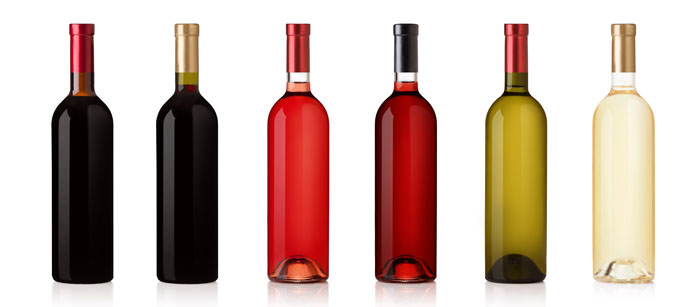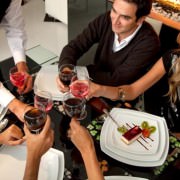Beverage Trend Forecast: Wine Trends For 2017
Let’s dust off our crystal ball and take a glimpse into the (very) near-future of wine.
To start, I’d like to say that it is a really exciting time for wine right now. And though 2015 saw a -4.1 percent decline in sales volume for wine in bars and restaurant — 2016’s sales numbers are likely to echo 2015’s disappointments — wine is thriving in retail sales.
There is also a lot of excitement over the direction that influential restaurants and sommeliers are taking wine experiences in restaurants. The past couple years have given us some big stories: the revelation of rosé and its insane growth; the coming-out of Spanish wines like Tempranillo, or the continued blossoming of the South American wine industry; and the obsession with millennials impact on wine crystallizing into the overstated maxim that”Millennials are Changing Wine.”
There are factors aside from just millennials that really are changing wine. Let’s take a look at what those might be and see the Wine Trends for 2017.
Turn Your Staff Into Wine Selling Gurus with Uncorkd’s Definitive Wine Training Guide
Wine Sales Are in the Can

From It’s Always Sunny in Philadelphia
The future of wine looks to be more relaxed, taking the unbuttoned approach that helped launch craft beer into countless pint glasses across the country. Wine’s erudite stuffiness has capped its popularity with younger drinkers in the past, but that’s changing. Which is really exciting because that change is bringing wine to an entirely new market, and that market demands that the cork-tight culture of wine loosen up a bit and have some fun. Because if loosening up and having fun isn’t the point of wine, then what is?
How is loosening happening? Enter, stage left: Canned Wine.
Canned wine sales skyrocketed in 2016. Previously a niche market dominated by sparkling wine, canned wine sales more than doubled this year, clocking a growth rate of 125.2 percent.
The sales growth has been concentrated in off-premise sales — retail and store sales are currently driving overall wine sales, while restaurant and on-premise sales are slowing — but we expect to see more canned wine sold at restaurants and bars in 2017.
When it comes to marketing, the only thing that beats good packaging is a good story. Canned wine has both. And as big retail sales make drinkers accustomed to drinking wine from a can, you will find more canned options on restaurant menus.
Canned wines are great patio sippers. Think of an outdoor restaurant space lined with picnic tables and kitsch tableware, can’t you envision a canned wine fitting perfectly in that picture?
One question will be whether or not restaurants will offer a wine glass alongside the can, like one might with a bottle of craft beer. Buy does pouring a canned wine into a wine glass kill the appeal of canned wine in and of itself?
We’ll have to wait and see. But as part of the wine market is priced out of Bordeaux and Napa Valley wines, we’ll see a market shift in favor of the laid-back wine drinker.
Youth is Wasted on the Young

But drinking a young wine isn’t a waste! Despite the tired adage, aged like a fine wine, some grapes and their wines are just fine to drink while still young and vigorous.
Some people just go wild for young wines. Just log on to twitter on the annual release of Beaujolais Nouveau.
Young wines are often fruit forward, with minimal aging and little to no contact with oak. They have an appeal through their uniqueness, and that they buck the conventional wisdom of age being a pre-requisite for quality.
The following varietals and wine styles are young, or at least exhibit the qualities of a young wine, and their grapes aren’t grown for aging but for immediate enjoyment.
Look for these varietals and wine styles to be appearing on a lot more wine menus in 2017:
- Vinho Verde
- There is a growing following for the youthful and effervescent Vinho Verde. Nearly synonymous in the States with the brand Broadbent, the wines underripe fruit and slight sparkle recommends it as the perfect summer darling for sipping on shaded patios.
- Txakoli
- Similar to Vinho Verde, with a precocious fizz, bright acid, and fleeting minerality; the Basque Country wine has crept across the Atlantic and found a home on wine menus in tapas bars and Spanish restaurants. Pronounced chock-oh-lee, the wine’s difficult pronunciation may be the biggest hurdle to clear if it is to become a summer sensation.
- Gamay
- Pick a Cru, any Cru and you can find something to love. The Gamay grape and its growing region, Beaujolais, both have the right blend of idiosyncrasies, quality, and nuance, to amass a cult following and fervent love for the light wine. Gamay is a lighter bodied red wine, and the wines grown in the following Crus (or villages) are meant to be enjoyed soon after their vintage: Brouilly, Régnié, and Chiroubles. Look for more Gamays from these regions to be on your by-the-glass list this year. Gamay is also a good wine to chill before serving.
- Albariño
- Spanish wines have steadily grown in popularity over the last few years. Particularly the growth, no pun intended, of Tempranillo. But 2017 may give us the summer of Albariño. Expect to see it on more wine by-the-glass lists. Light and fruity with balanced acidity, Sauvignon Blanc and Pinot Gris drinkers can find a lot to love about Albariño. It helps that it is as affordable as it is delicious.
The Little Guys Will Bring the Biggest Change

The wine universe keeps expanding. No longer do the poles of France and California dominate wine lists. As long as South American wine producers like Chili and Argentina continue to impact consumer preference, Australian wines continue their success in the retail space, the rise of small wine importers will continue to bring sommeliers and wine directors wonderful new wines from little known producers, then that universe will continue to expand.
It’s exciting to sit down to a wine menu and see the range of geography and varietals that are being offered.
A great article on wine importers in Crain’s Business Magazine noted how “[many] attribute the growth of the little guys to consolidation at the top.”
The industry-shifting mergers of 4 of the biggest 6 wine and spirits distributors have left a gap open that small and mid-sized importers are eager to fill. That gap is where small producers exist, and small distributors will be their chaperones into restaurants and onto menus.
As a wine director or restaurant operator, it’s important to build strong relationships with all your distributors, but even more so with the little guys.
Hand Selling and Wine Information Will Be More Important
As new wine styles and grapes appear on menus, the importance of wine service and good information will increase. This doesn’t need to be Somm level knowledge, but competent servers and strong wine knowledge will become more crucial for selling unique wines.
Training your staff will be very important, and finding new ways to increase wine sales will be a focus for many beverage and wine directors.
Tools for selling wine and creating unique experiences, like Uncorkd digital wine menus will create an intersection of good service and unique experience.
Turn Your Staff Into Wine Selling Gurus with Uncorkd’s Definitive Wine Training Guide
More Beverage Trends to come
This was the first article to highlight Uncorkd’s Beverage Trend Forecast for 2017. Look for our next segment on Beer Trends for 2017.
- 5 Fall Cocktails to Capture the Flavors of Autumn - September 26, 2018
- How Restaurants Can Ignore Sales and Increase Profits - May 9, 2018
- 2018 Spring Wine Trends - April 18, 2018









